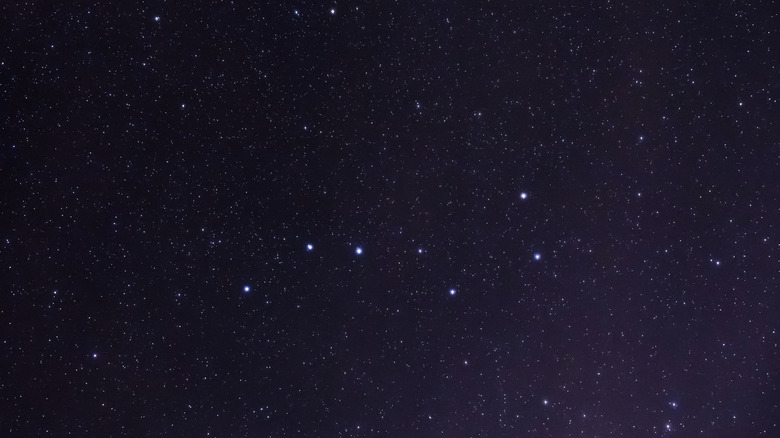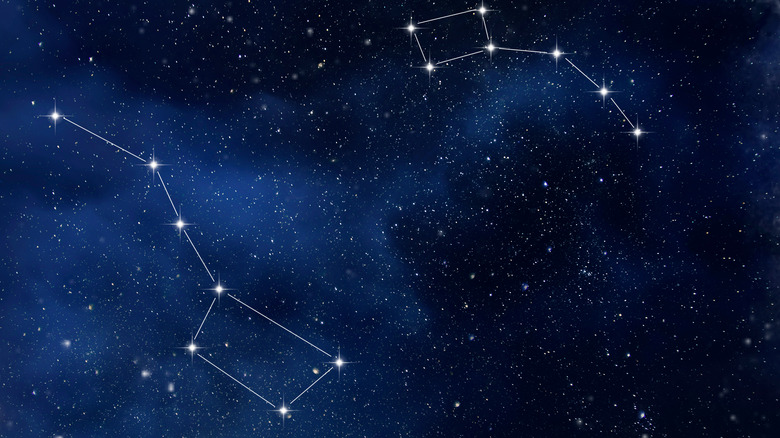The Mythology Behind The Ursa Major Constellation Explained
If you live in the Northern Hemisphere, you've probably looked up at the night sky at some point and identified Ursa Major (or the Great Bear) as you gazed at the twinkling stars. After all, it's the most well-known constellation according to Sciencing. That's because the Big Dipper — in the shape of giant ladle — makes up about half of Ursa Major. And what's more, two of the Big Dipper's stars (named Merak and Dubhe) point to Polaris, the North Star (another famous celestial body), which sits on the tail of Ursa Minor (via Adler Planetarium). As everyone knows, once you find the bright North Star, you always know the direction you're facing (NASA Science).
Since the ancient Greek civilization, the nighttime sky has told a story of animals, objects, villains, and heroes, becoming an integral part of the culture's mythology. During those times, the constellations were known as katasterismoi or "placings of the stars," named in deference to the gods that put them there, according to Space.com. The Greeks believed that the constellations taught life lessons. They reminded people that beasts could be defeated, like when the champion Hercules conquered so many monsters during his 12 labors (and then was immortalized in a constellation). The shapes in the stars also showed humans the terrible price mortals paid for not honoring the gods.
A terrible punishment from a goddess
The Big Dipper depicts the myth of Callisto, a lovely nymph, pursued by Zeus, the king of the gods, and the son she bore him named Arcas. Hera, the queen of the gods and Zeus' wife, turned Callisto into a bear after a fit of jealousy. She was doomed to roam the world as an animal until one day she met her son. He did not recognize his mother and attempted to kill her, but Zeus could not bear to see this happen. Instead he transformed both of them into constellations. Arcas became Ursa Minor and Callisto Ursa Major, and the two remained close to one another in the sky (from My Modern Met).
While you can spot Ursa Major all year long in the Northern Hemisphere, the best time to see it is in the spring when the constellation sits high in the northeastern sky, according to Star Date. The Big Dipper consists of seven bright stars, and is sometimes easier to spot than the bear constellation. Ursa Minor is also visible year-round, but for the best views look to the skies in the summertime, reports Star Registration.

